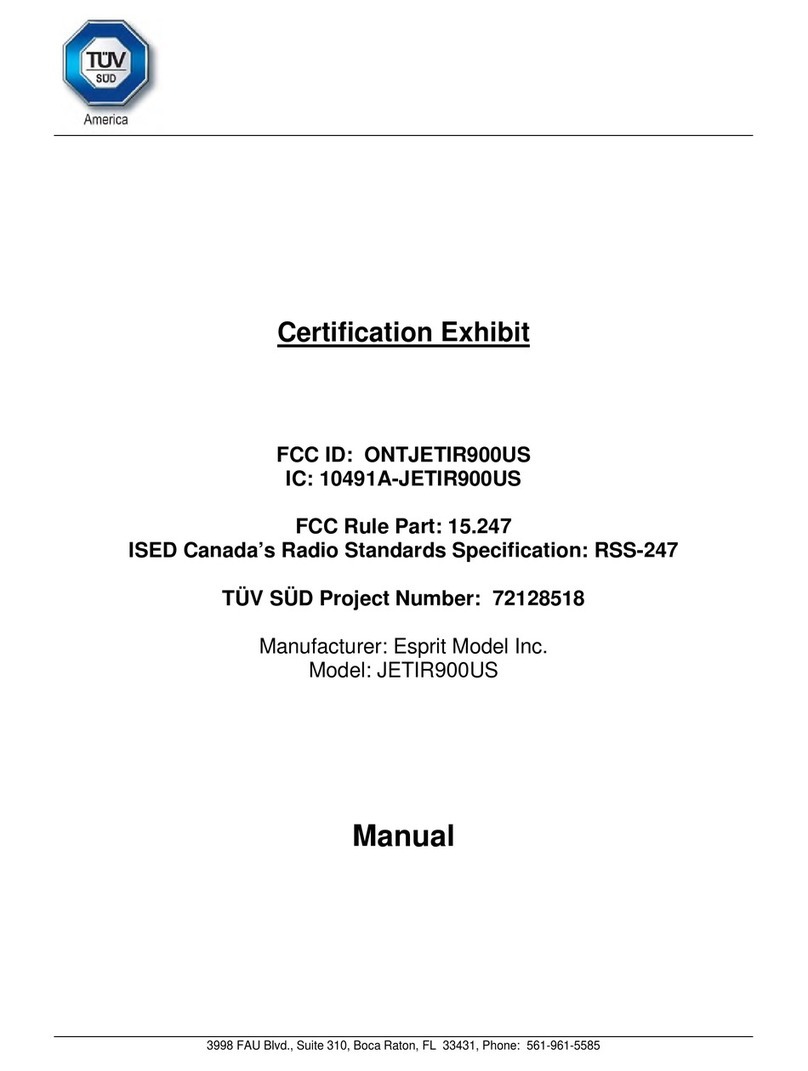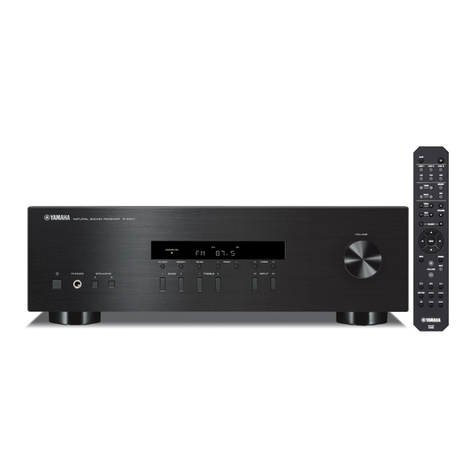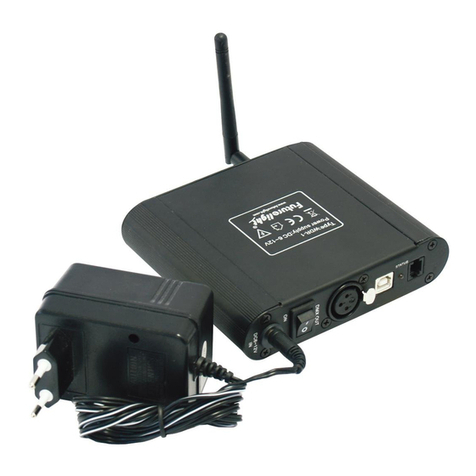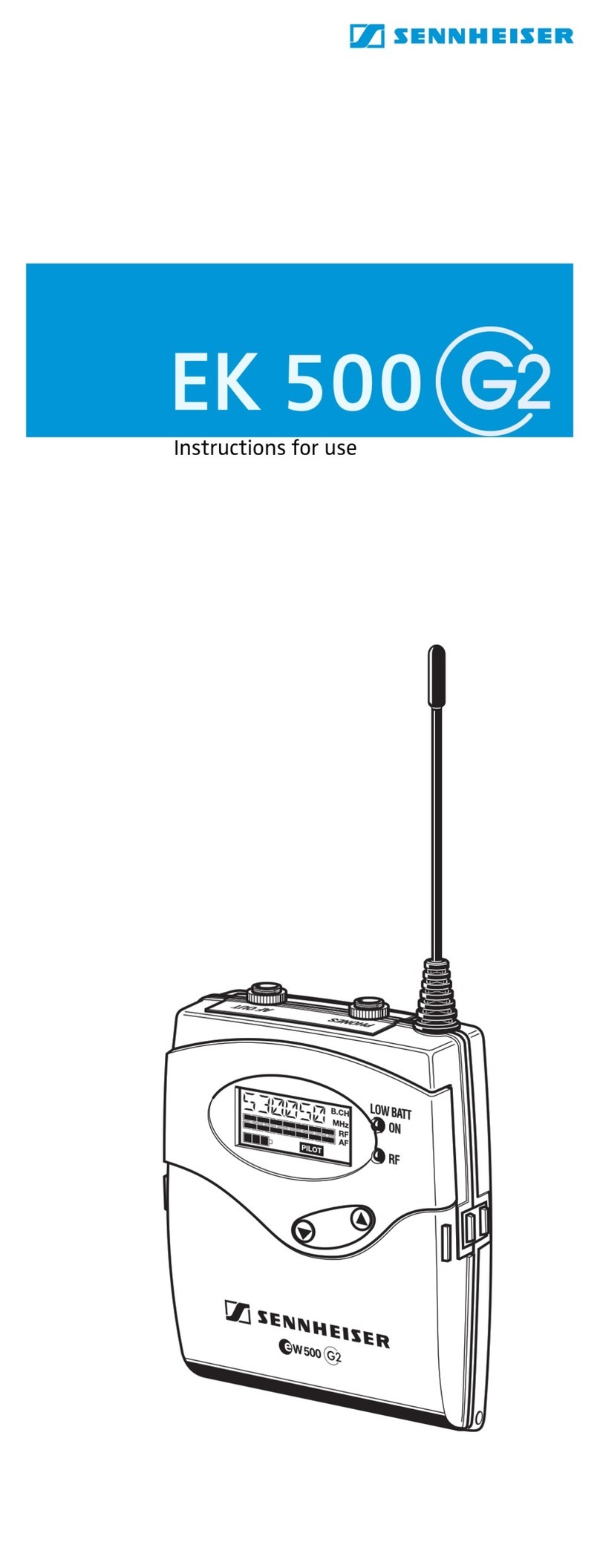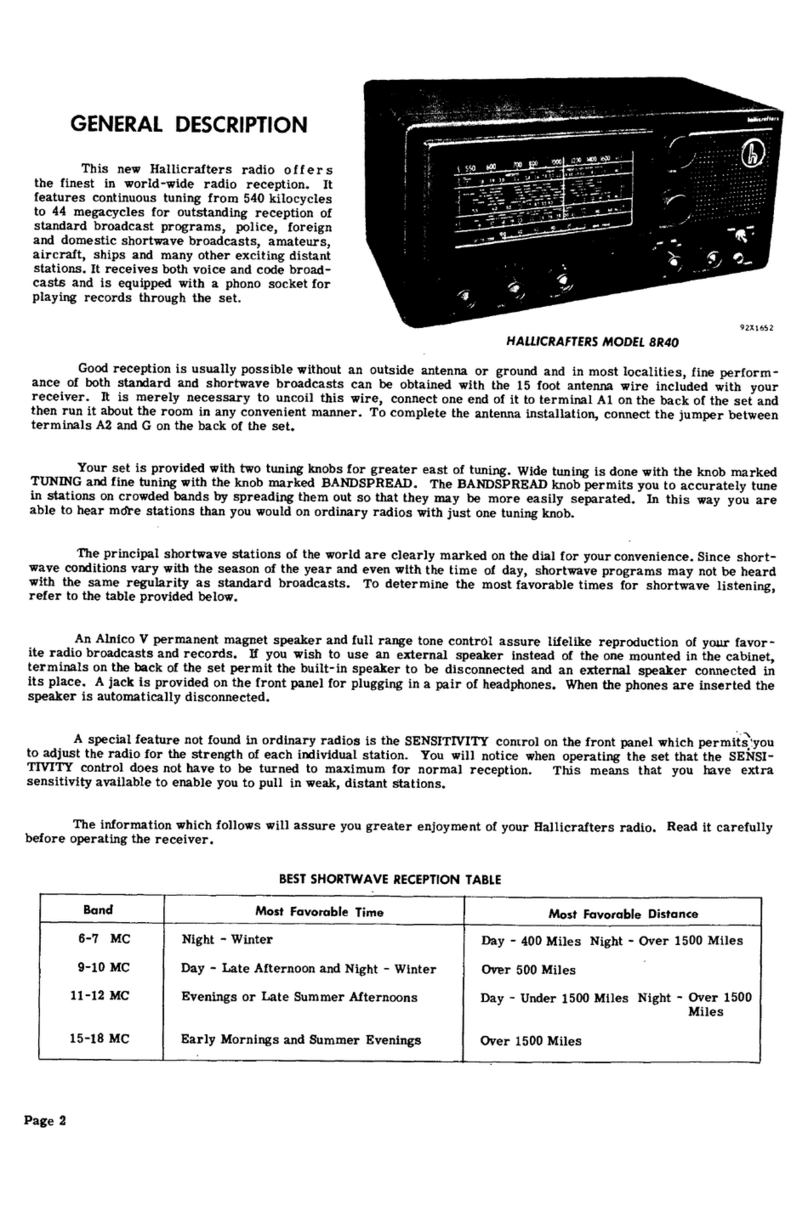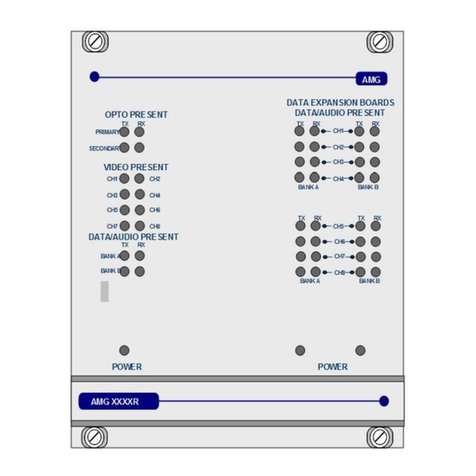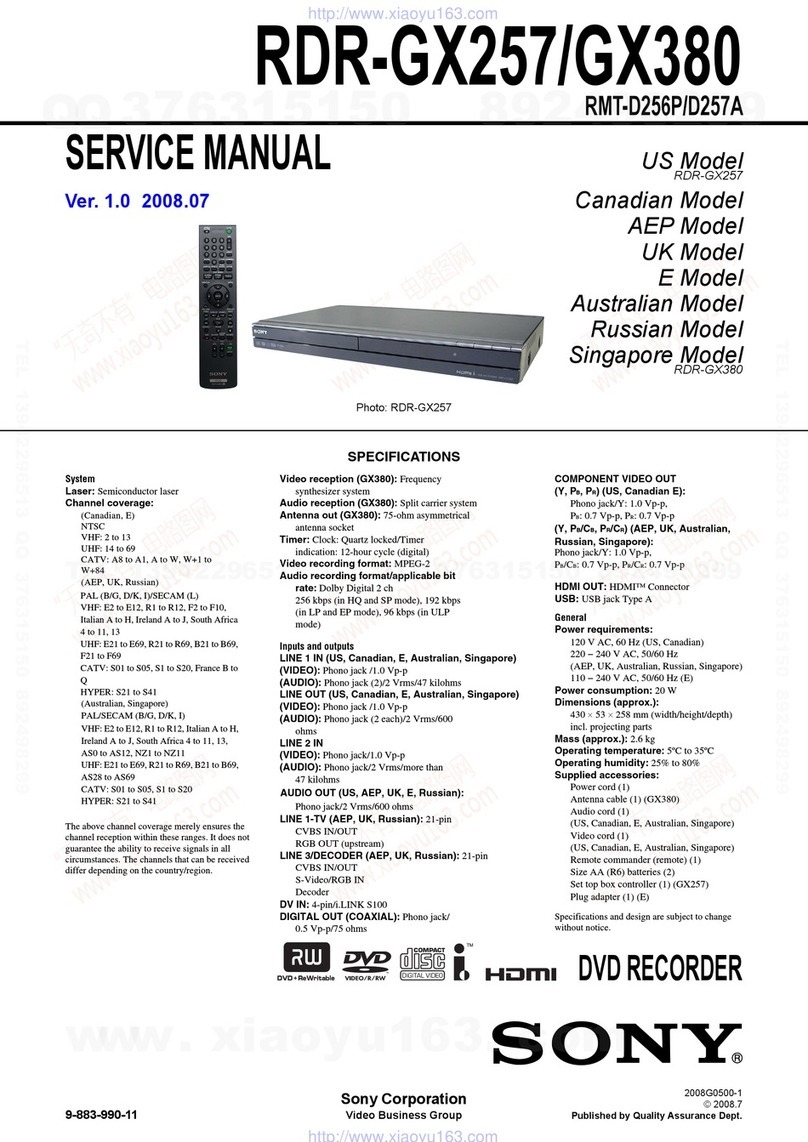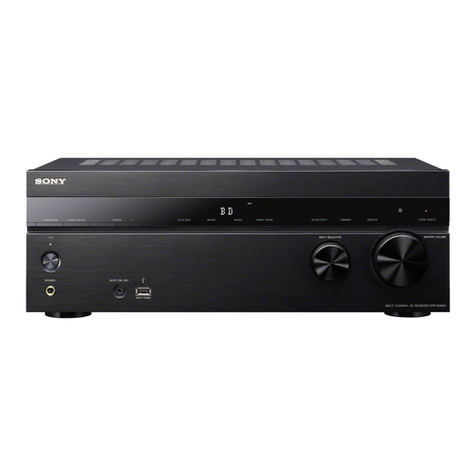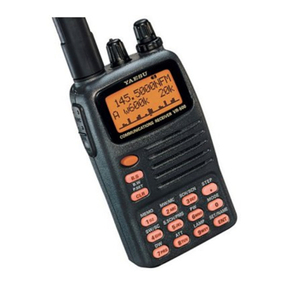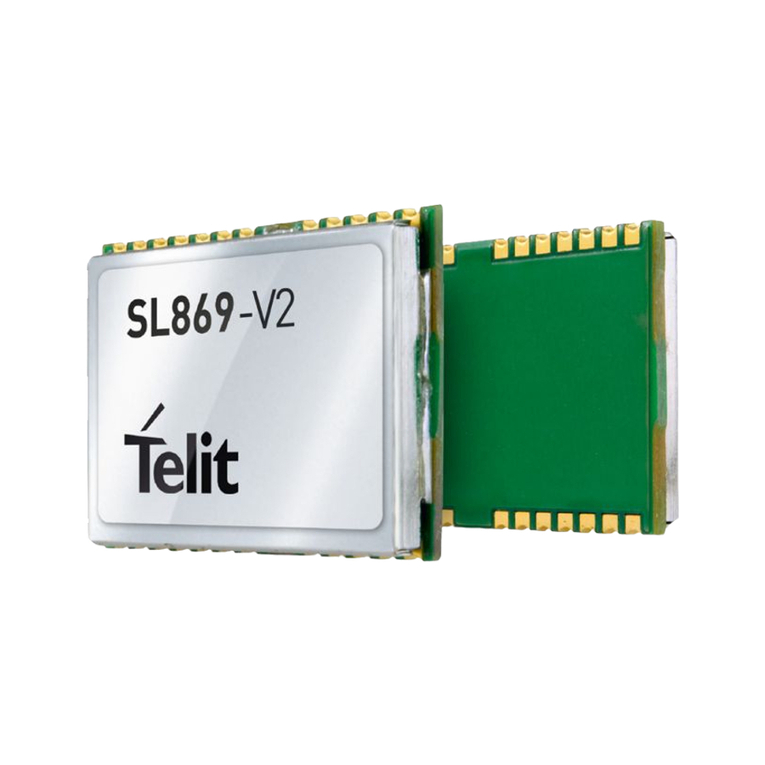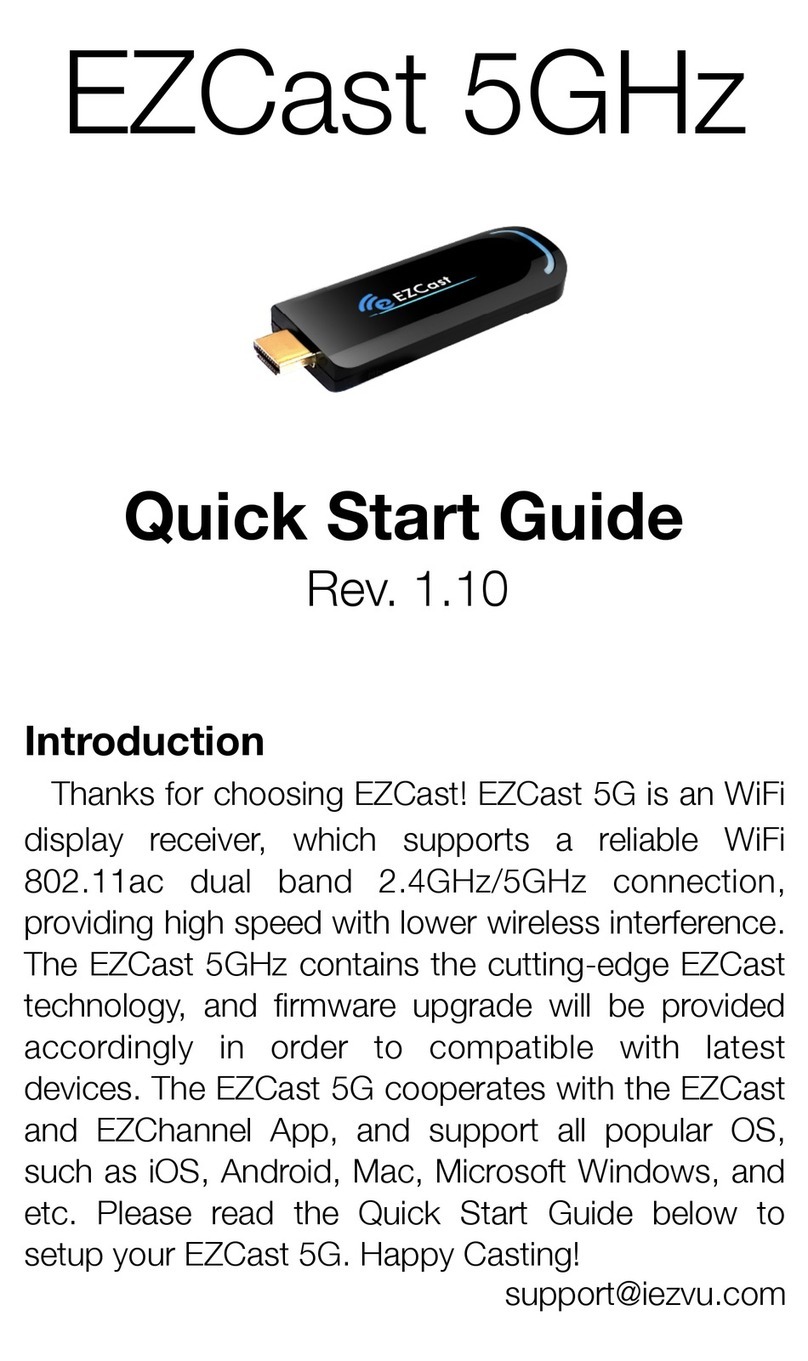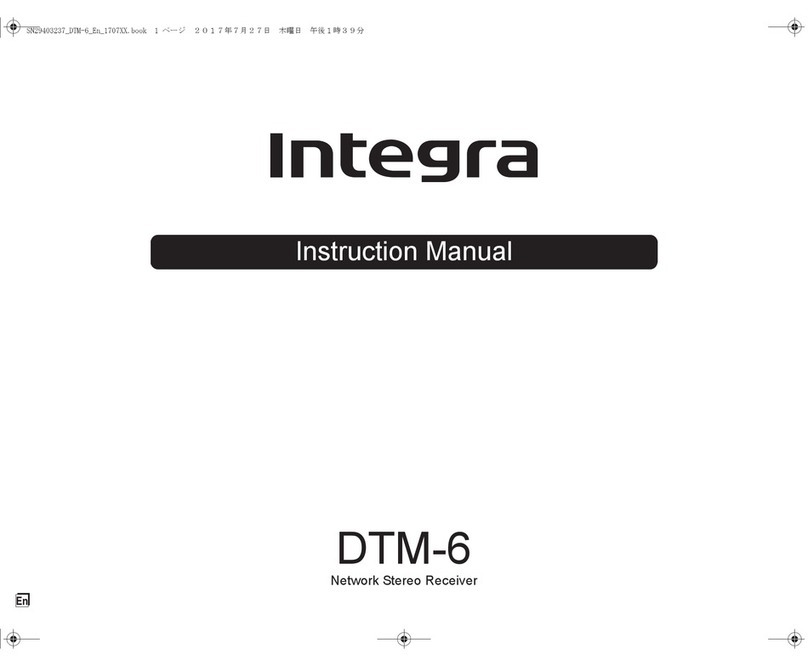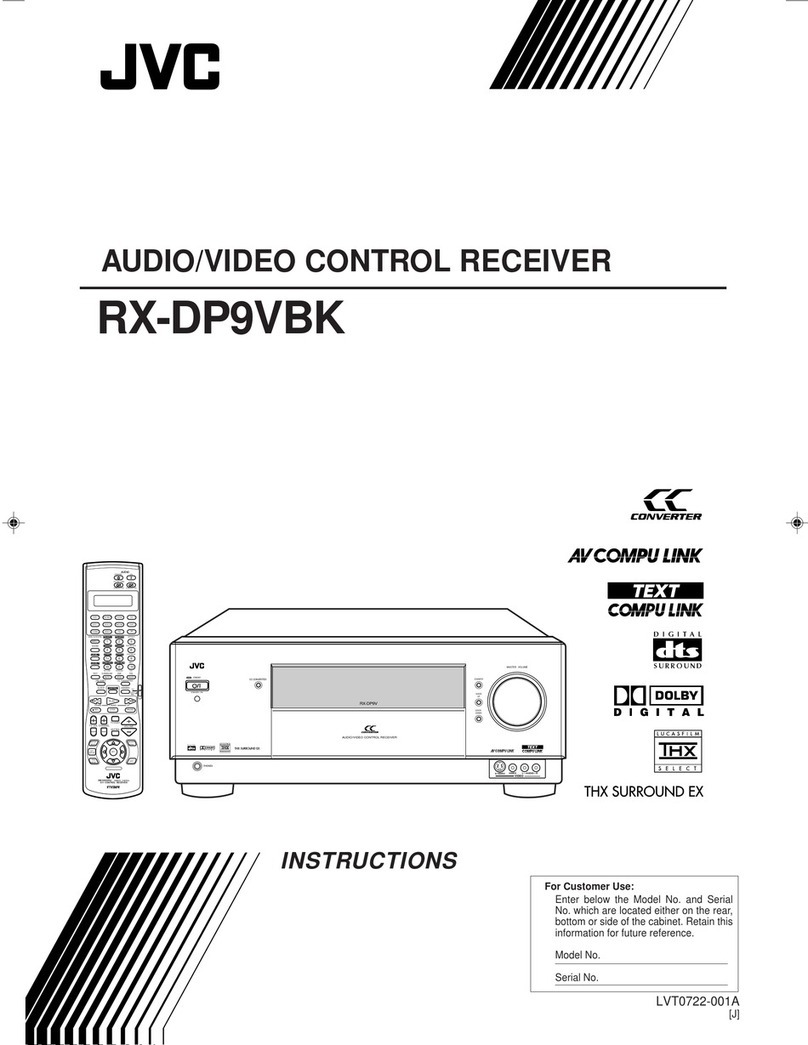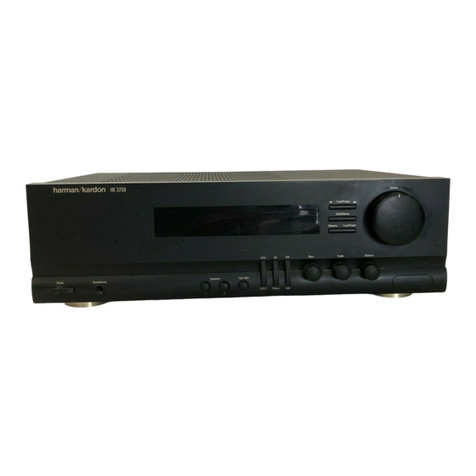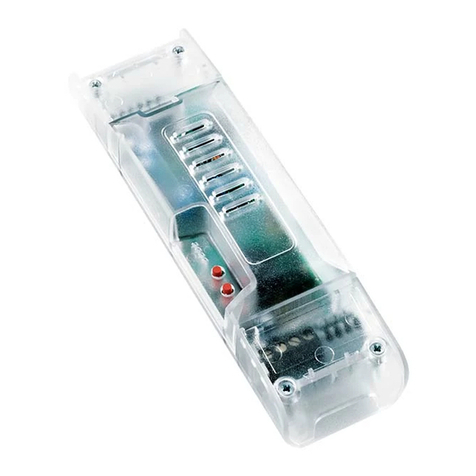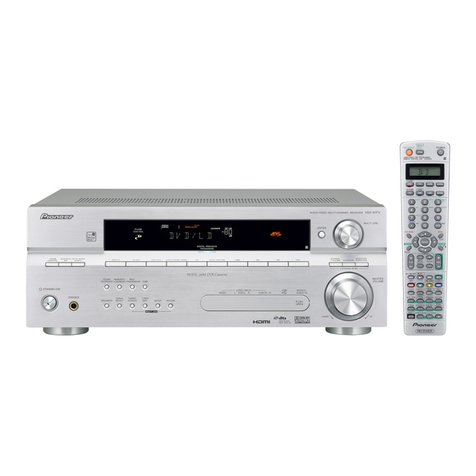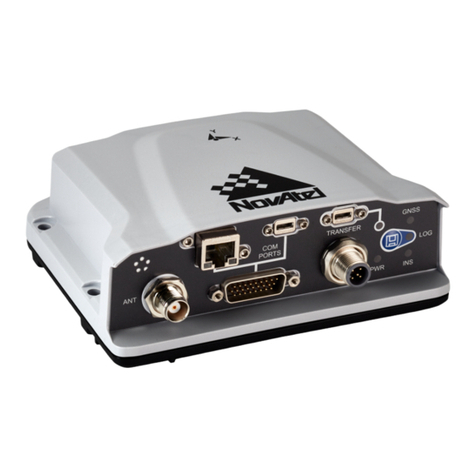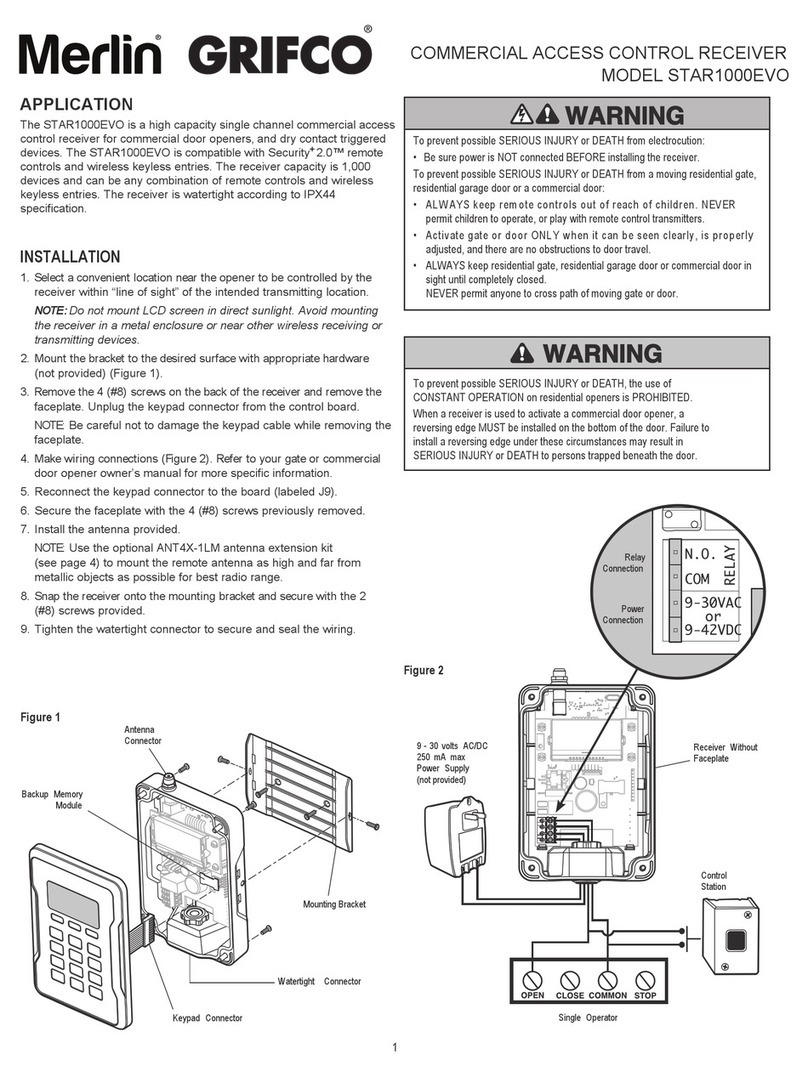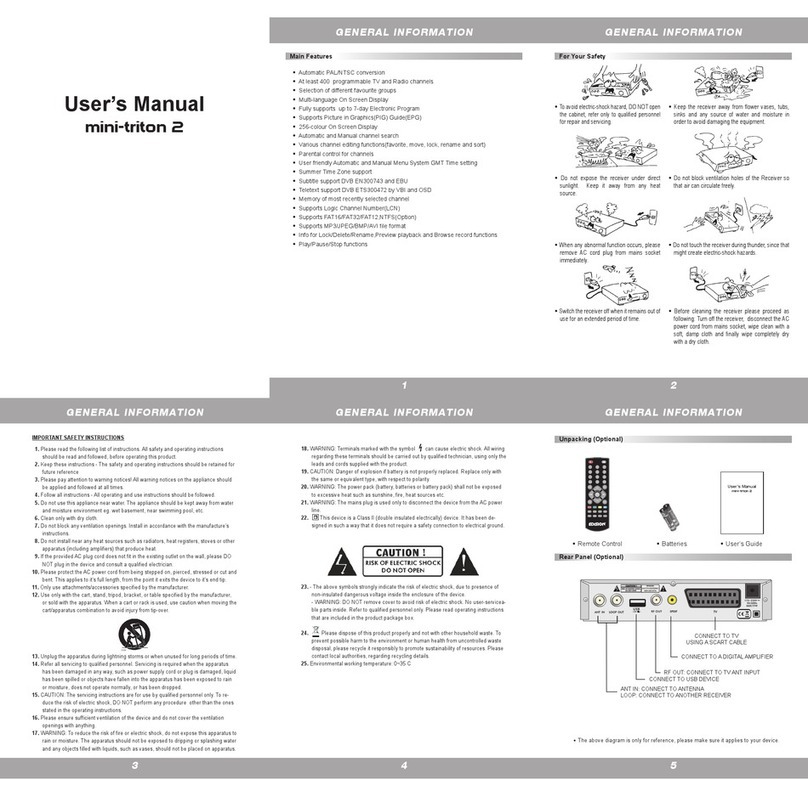Jeti duplex REX3 User manual

COMPUTER RADIO CONTROL SYSTEM
®
COMPLEX RADIO CONTROL SYSTEM
User Manual ... 01User Manual ... 01User Manual ... 01
Bedienungsanleitung ... 30Bedienungsanleitung ... 30Bedienungsanleitung ... 30
EN
DE
FW 1.14FW 1.14
Receivers REX
FW 1.14
Empfänger REXEmpfänger REX
FW 1.14FW 1.14
Empfänger REX
FW 1.14

COMPUTER RADIO CONTROL SYSTEM
2

COMPUTER RADIO CONTROL SYSTEM
1. Introduction ......................................................................................... 05
2. Technical data ...................................................................................... 06
2.1 Receivers 2.4 GHz ........................................................................ 06
2.2 Receivers 900 MHz ...................................................................... 07
3. Installation ........................................................................................... 07
3.1 Voltage Supply ........................................................................... 07
3.2 Operation ..................................................................................... 08
3.3 Binding .......................................................................................... 08
4. Real Time Telemetry ........................................................................... 10
4.1 EX Telemetry ................................................................................. 10
4.2 - 1st Generation ........................................................................... 10
5. Receiver setup ..................................................................................... 11
5.1 Receiver Setup via the JETIBOX ................................................ 11
EN
ENGLISH
3
Ver. 2020-10

COMPUTER RADIO CONTROL SYSTEM
5.1.1 Direct connection between a JETIBOX and the
receiver ............................................................................... 11
5.1.2 Wireless connection between a JETIBOX with
transmitter or DC/DS transmitter and the receiver ..... 11
5.2. Receiver set-up via the DC/DS transmitter ............................ 12
6. Receiver Menu ......................................................................................... 13
6.1 Overview of receiver data items ............................................ 13
6.2 Measure ....................................................................................... 11
6.3 Main setting ................................................................................. 14
6.4 Out pin set .................................................................................... 17
6.5 Auto set ......................................................................................... 20
7. Receiver Rsat 900 NG (Next Generation)......................................... 21
7.1 General Settings .......................................................................... 21
7.2 Alternative Pin Config ................................................................ 22
8. Receiver update ...................................................................................... 23
9. Examples of Rx setup ........................................................................... 24
4
EN

COMPUTER RADIO CONTROL SYSTEM
JETI Duplex receivers are designated for use with the DC/DS
transmitters or the JETI transmitter modules in the 2.4 GHz
frequency band.
The system is continuously improved. Thanks to online updates the
improvements are easily accessible to users from any part of the
world. From the very beginning bidirectional transmission has
been a distinctive feature of the Duplex system, this not only
handles telemetry data, but it also helps to ensure secure primarily
transmission safety between the transmitter and receiver.
The Duplex EX telemetry system uses an open protocol. This gives
the advantage of compatibility with a large number of telemetry
sensors from both JETI model and third party producers. For the
display of telemetry data you can use purposely designed
equipment like the JETIBOX profi and DC/DS transmitters or
you can display the data on PCs.
Although our development of the Duplex system seems to be very
fast, we make the extra effort to keep backward compatibility with
REX Receivers
1 Introduction ENGLISH
FW. ver. 1.14
5
EN

COMPUTER RADIO CONTROL SYSTEM
earlier Duplex versions. By design, users are not forced to
continually buy new equipment to take advantage of the latest
improvements.
The JETI model company portfolio contains a diverse offering of
electronic modelling equipment like voltage regulators, motor
speed controllers, telemetry data display equipment, telemetry
sensors and, last but not least, DC/DS transmitters. The JETI
model product manfacturing policy is to constantly produce the
highest quality product possible.
2 Technical data
Basic Data
REX3
REX6
REX7
REX10
REX12*
Dimensions [mm]
40x22x7
38x25x11
42x28x11
51x28x11
51x28x11
Weight [g]
7
11
13
16
24
Antenna length [mm]
2x100
2x100
2x200
2x200
2x400
# of channel outputs
3
6
7
10
12
Temperature range [°C]
-10 to +85
-10 to +85
-10 to +85
-10 to +85
-10 to +85
Supply voltage [V]
3.5 – 8.4
3.5 – 8.4
3.5 – 8.4
3.5 – 8.4
3.5 – 8.4
Average current [mA]
70
75
75
75
75
Real time transmission
of telemetry data
Yes
Yes
Yes
Yes
Yes
Programming
DC/DS
/JETIBOX
DC/DS
/JETIBOX
DC/DS
/JETIBOX
DC/DS
/JETIBOX
DC/DS
/JETIBOX
Support satellite receiver Rsat
Yes
Yes
Yes
Yes
Yes
Power output [dBm]
15
15
15
15
15
Receiver sensitivity [dBm]
-106
-106
-106
-106
-106
Frequency [Mhz]
2400 - 2483
2400 - 2483
2400 - 2483
2400 - 2483
2400 - 2483
* xternal ower onnector E P C
2.1 Receivers 2.4 GHz
6
EN

COMPUTER RADIO CONTROL SYSTEM
3.1 Voltage supply
When designing the on-board wiring for your project, always pay
attention to the voltage input range of your receivers and servos.
You can connect supply voltage to the Duplex receivers as
follows:
- directly from the batteries
- via a BEC voltage regulator (either contained in speed
controllers or self contained)
3 Installation
Basic Data
Rsat900
Rsat900 NG
Dimensions [mm]
40x22x7
40x22x7
Weight [g]
11
11
Antenna length [mm]
2x300
2x260
# of channel outputs
3
3
Temperature range [°C]
-10 to +85
-10 to +85
Supply voltage [V]
3.5 – 8.4
3.5 – 8.4
Average current [mA]
70
50
Real time transmission of telemetry data
Yes
Yes
Programming
DC/DS/JETIBOX
DC/DS
Support satellite receiver Rsat
No
No
Power output [dBm]
14
14
Receiver sensitivity [dBm]
-110
-120
Frequency [Mhz]
863 - 870 (EU)
902 - 928 (US)
863 - 870 (EU)
902 - 928 (US)
2.2 Receivers 900 MHz
7
EN
Receivers RSAT 900 and RSAT 900 NG are not compatible!

COMPUTER RADIO CONTROL SYSTEM
The supply may be connected to the Duplex receivers via:
- the throttle channel (when applying speed controllers with BEC)
- a free receiver output.
- a Y-cable to any arbitrary receiver output
- the MPX connector for receivers with the EPC label which are
equipped with a power supply connector
3.2 Operation
We recommend that you switch on the transmitter first and then
subsequently the receiver. The transmitter confirms the switching-
on of the receiver with an acoustic signal. When switching off the
system we recommend that you switch off the receiver first and
then subsequently proceed with switching-off the transmitter.
3.3 Binding
When using a new receiver or transmitter it is necessary to carry out
the binding process between them. Transmission between the
receiver and transmitter occurs in fully digital manner, therefore it is
necessary to identify and share the addresses of each device
communicating on the mutual 2.4GHz frequency band.
Procedure:
1. Insert the BIND PLUG (included in the receiver packing) into the
receiver socket labeled Ext.
2. Switch on the receiver – (connect a proper voltage supply to the
receiver). Binding of the receiver may now be performed within 60
seconds. After the 60 seconds elapse the receiver returns to setup
mode and the binding process must be repeated by starting again
from step 1.
8
EN

COMPUTER RADIO CONTROL SYSTEM
3. Switch on the transmitter - the transmitter emits an acoustic
signal announcing the detection of a new receiver.
Binding may be carried out with the aid of the JETIBOX instead of
using the BIND PLUG.
The procedure is as follows:
1. Connect the JETIBOX with the connecting cable to the Ext.
receiver output .
2. Switch on the receiver - (connect a proper voltage supply to the
receiver).
3. The receiver menu appears on the JETIBOX display. Select the
„Pairing“ menu item (push the right arrow button once from the
main receiver display) and then push the upward button. You now
have a period of 60 seconds to bind the receiver. After the 60
seconds elapse the receiver returns to setup mode and the binding
process must be repeated by starting again from step 3.
If the binding process between receiver and transmitter was
unsuccessful, try again.
You may bind an arbitrary number of receivers to one transmitter.
The receiver, however, can only be bound to one transmitter, i. e. the
receiver is only bound to the most recently bound transmitter.
As long as the BIND PLUG is inserted into Ext. input, the receiver is
always in „Normal“ mode, regardless your actual receiver setup.
After BIND PLUG is removed, the receiver returns to your selected
setup mode.
9
EN

COMPUTER RADIO CONTROL SYSTEM
Every receiver is able to transmit the actual voltage supplied to the
on-board system (i. e. receiver voltage) without the need to connect
any additional external sensors. If you want to take advantage of
extended telemetry, connect a telemetry sensor to the Ext. input of
the receiver. If you want to operate several telemetry sensors
simultaneously with one receiver, you must use one or more of the
Expander EX devices, which , when connected to the Ext. receiver
input, gives you multiple inputs for telemetry sensors.
There are two ways to use JETI telemetry. The EX telemetry is
available to owners of the JETI DC/DS transmitters or the
JETIBOX profi. The 1st Generation Telemetry can be used by
owners of the TU, TG, TF etc. transmitter modules.
4.1 EX Telemetry
This telemetry data is displayed according to user selections in the
DC/DS transmitters and the JETIBOX profi. You will find more
details in actual instruction manuals of the given Duplex EX
equipment.
4.2 - 1st Generation
Connect the JETIBOX to the transmitter module. Switch on the
transmitter and connect the receiver voltage supply (see chapter
„Voltage supply“). The Tx heading appears in the JETIBOX display
and by pressing the push-button R (right button) twice, select the
Mx menu. By pressing the push-button D (down) you will enter the
telemetry sensor or expander menu. You may leave the telemetry
sensor menu by pressing the push-button U(up) slightly longer.
4 Real time telemetry
10
EN

COMPUTER RADIO CONTROL SYSTEM
5.1 Receiver setup via the JETIBOX
There are two receiver setup modes. The first is receiver setup via
the JETIBOX, JETIBOX profi or JETIBOX emulation in the DC/DS
transmitters, the second one is direct setup of the receiver with a
DC/DS transmitter.
5.1.1 Direct connection between a JETIBOX and the
receiver
Insert one end of the connection cable (included with the JETIBOX)
into the socket labeled Impuls + - (see the right side of the JETIBOX)
and the other end into the receiver socket labelled Ext. Connect a
voltage supply to the receiver (see Voltage supply) or to the supply
socket of the JETIBOX. There is no need to supply voltage when
using the JETIBOX profi.
5.1.2 Wireless connection between a JETIBOX with
transmitter or DC/DS transmitter and the receiver
In this case, connect the JETIBOX with the transmitter (if you are
using a DC/DS transmitter, then select the JETIBOX emulation).
Switch on the transmitter and then connect the receiver voltage
supply. The Tx heading appears on the display along with right and
down arrows. In order to enter the receiver, press the R button
(right), the Rx heading appears on the display and by subsequently
pressing the D button (down) you enter the receiver menu, which
will be displayed just the same as the direct connection mode (see
5 Receiver setup
11
EN

COMPUTER RADIO CONTROL SYSTEM
paragraph 5.1.1). Wireless connection is only possible when a
receiver is in“Normal“ mode (MeasureOrSetting->Main Setting -
>Rx mode: Normal).
The JETIBOX can be disconnected only after you disconnect the
receiver voltage supply. You may monitor the on-board state of
your receiver during your model‘s operation. Pay particular
attention, of course, to your setup work. If it is possible, we do not
recommend changing setup parameters during model
operation. Set-up work should only be done if there is no danger
of damaging the model or injuring people. For safety reasons
prevent motor activation or remove the propeller!
5.2 Receiver set-up via the DC/DS transmitter
Please see information concerning receiver set-up via transmitters
in the DC/DS transmitter instruction manual. You can find the
DC/DS instructions on the manufacturer‘s website.
12
EN

COMPUTER RADIO CONTROL SYSTEM
6 Receiver menu
6.1 Overview of receiver data items
The introductory display shows the receiver type. By pushing the R
key (arrow down) more detailed data of receiver and transmitter
can be displayed.
Pairing - by pushing the U key (arrow up) pairing of the receiver
with the transmitter will be executed. Pairing of the receiver should
only be carried out when JETIBOX is directly connected to the
receiver.
RX/TX- RX item shows the unique production number of the
receiver. The TX item shows the unique production number of the
transmitter, to which the receiver has eventually been paired.
Rx Diag- A1 or A2 item shows which antenna the receiver is using at
present. Kx item informs about the number of transferred channels
(this number depends on the transmitter abilities).
By means of the D key (arrow down) you arrive at the line of basic
mode selections, where you may select read out of measured
values (Measure) or setup of the receiver (Main setting, Out Pin
Set, Auto Set).
6.2 Measure
Measure - enables read out of measured data of the maximum,
minimum, and actual receiver voltage.
Volt Min / Act / Max - the receiver is checking the supply voltage
13
EN

COMPUTER RADIO CONTROL SYSTEM
and indicates the limit values and extremes which occurred during
operation; at the same time it also shows the actual receiver
voltage. Without switching on the paired transmitter the values
MAX and MIN will not change, only the value of the actual voltage
ACT will be updated. In order to delete MAX and MIN values, keys L
(arrow left) and R (arrow right) must be pressed simultaneously.
RX Signal Level - strength of radio signal from Tx to Rx.
6.3 Main Setting
Fail Safe - switches the Fail Safe function on and off. If the Fail Safe
function is disabled, there are no signals generated on receiver
outputs in case of signal loss. If the Fail Safe function is activated,
the receiver outputs are generated according to your individual
channel setup selections in case of signal loss („out off“, „hold“,“ fail
safe“).
Signal Fault Delay - the time interval from when the receiver
detects signal loss to when the fail safe control throws are initiated.
After the expiration of this time, the receiver outputs will transfer to
your selected individual channel outputs.
Volt ACT/ALARM - the first item displays the actual receiver supply
voltage, the second value represents the setup threshold level for
alarm purposes. During operation, as soon as the actual voltage
becomes lower than the threshold level, the transmitter emits an
acoustical warning tone.
(This setup is for transmitter modules only. For the DC/DS transmitters,
this alarm is set in the transmitter.)
14
EN

COMPUTER RADIO CONTROL SYSTEM
Output Period - output signal period setup (initial setup for the
Autosynchronizing mode with the transmitter). This parameter is
fundamentally influencing servo behaviour. With lower output
period values the reactions (response) of analog servos become
faster, but current consumption increases. With a too low setup
value some servos may even start chattering.
PPM-UDI Mode - data conversion mode can be:
Direct
ź output PPM signal contains data directly from the transmitter,
without conversions and channel mapping
ź conversions and possible channel mapping are applied to
output servo impulses only
ź different channels might be assigned to the PPM signal and
servo output pins
Computed
ź conversions and prospective mappings are applied to output
servo impulses and also to PPM signal
ź servo impulses and PPM signal contain the same information
OutputChannelCnt - setup of generated number of receiver
outputs in PPM. If the receiver receives less channels than selected
in setup, the remaining channels (in Computed mode) will be
replaced by a throw specified by the Fail Safe value for individual
channels. Otherwise, the number of output pulses will be reduced
to the setup number.
15
EN

COMPUTER RADIO CONTROL SYSTEM
Rx mode - the working mode of the receiver. Possible choices:
Normal
ź bidirectional communication between receiver and
transmitter
ź select this setup for the model‘s main receiver
ź use the same setup if you use only one receiver in your model
(in case you are using only one Duplex receiver for remote
control)
Clone
ź unidirectional communication
ź if you use several Duplex receivers in the model, for instance in
connection with one transmitter module, then you should
operate one of the receivers in „Normal“ mode and the others
in „clone“ mode
ź the receiver operating in „Normal“ mode is considered to be
the main receiver. One of the transmitter modules is able to
control only one receiver in „Normal“ mode
ź if you want to operate several receivers with only one
transmitter module, you should operate them in „clone“
mode
If you switch the receiver to „clone“ mode, further wireless setup
communication becomes impossible because the receiver is now
communicating only unidirectionally. In order to change the mode
or setup, you have to connect the JETIBOX to the receiver and make
the desired change or switch the receiver back to„Normal“ mode:
1. Insert BIND PLUG into the receiver socket labeled Ext.
2. Switch on receiver
3. Switch on transmitter
4. Execute the desired setup changes, see „Receiver setup“
16
EN

COMPUTER RADIO CONTROL SYSTEM
6.4 Out pin set
Setup of the physical receiver outputs.
Set Output pin - selection of output, which goes for the following
setup. The menu item shows, as a decimal number, the throw of the
selected output. Receiver output 1 is labeled as Y1.
Pin Config - receiver pin config can be:
Servo
ź standard impulse output for servos
(-100% = 1ms, 0%= 1,5ms / +100% = 2ms )
Digital
ź the output pin is in a stable LOW condition (log. 0) if the
position of this channel is negative, otherwise this pin is in
HIGH condition (log.1)
ź ensure that pin is used only as logical output, don't draw the
current above 1mA
Input
ź here the pin is configured as an input and its condition
(disconnected/connected to the ground) is sent to the
transmitter as other telemetry data from the sensors
ź it is allowed to keep the pin disconnected or connected to the
common ground of the receiver
ź it is not allowed to connect to a different voltage. The pin
works exclusively in PullUp mode so all you need to test the
function is to connect the signal pin to the ground.
PPM pos.- standard form of PPM signal generation with
positive logic at PPM outputs. The bus idle state is log. 0.
17
EN

COMPUTER RADIO CONTROL SYSTEM
PPM neg.- standard form of PPM signal generation with
negative logic at PPM outputs. The bus idle state is log.1.
PPM input - for the given input there a PPM signal is expected
from the connected receiver
JETIBOX EX - telemetry sensor connection or data stream for
JETIBOX
EX Bus - digital communication, when transmits throw and
telemetry information with configuration possibilities of
equipment connected to this bus, for instance by a DC/DS
transmitter. This configuration type is used, for instance, when
receivers are connected for example to Central Box.
Serial UDI12/16 - serial data output suitable for connection of
devices with unidirectional UDI interface (e.g. Vbar).
PPM error code- in case of PPM input mode, an acoustic signal can
be set up to announce that this connected signal is missing. By
loading a character from the Morse alphabet you may set up tones
that will acoustically announce the absence of a PPM signal at the
given receiver output. This acoustical signal is generated by the
transmitter module. In the factory default setup the acoustical
signal is switched off.
SetInChannel - assignment of an actual output (labelled as Yx) or
input channel (labelled as Chx)
Output Trim - neutral throw setup for receiver output
18
EN

COMPUTER RADIO CONTROL SYSTEM
Gain A - amplification of the output throw in the negative half-plain
A (from -150 to 0%)
Gain B - amplification of the output throw in the positive half-plain
B (from 0% to 150%)
Signal Fault - setup of the receiver behaviour in case of signal loss,
„hold“- holds the most recent control throw, „out off“ – output
switch-off (no signal generated), „failSafe“ – moves to preset throws
for the individual outputs
FS position - FailSafe output position in case of signal loss
FS speed - sets how quickly the throws move to the FailSafe
positions in case of signal loss
Output Group - setup of given output into a selected group of
output pulses, which will be simultaneously generated by the
receiver.
19
EN

COMPUTER RADIO CONTROL SYSTEM
Assignment table of receiver outputs:
• - Output types:
Y - servo output, dig. out, dig. input
E1,2 - JETIBOX-EX, PPM out, PPM input, EX-Bus, UDI
Ext. - JETIBOX-EX
6.5 Auto set
Loads a default receiver configuration from preset modes.
Factory default - to reset receiver to the factory settings press and
hold keys L and R simultaneously.
REX 3
Rsat 900
REX 6
REX 7
REX 10
REX 12
Pin1
Y1
Y1
Y1
Y1
Y1
Y1
Pin2
Y2 / E1
Y2 / E1
Y2
Y2
Y2
Y2
Pin3
Y3 / E2
Y3 / E2
Y3
Y3
Y3
Y3
Pin4
Ext.
Ext.
Y4
Y4
Y4
Y4
Pin5
Y5/E1
Y5
Y5
Y5
Pin6
Y6/E2
Y6/E1
Y6
Y6
Pin7
Ext.
Y7/E2
Y7
Y7
Pin8
Ext.
Y8/E2
Y8/E2
Pin9
Y9
Y9
Pin10
Y10
Y10
Pin11
Bat.
Y11
Pin12
Bat.
Y12
Pin13
E1
E1
Pin14
Ext.
Ext.
20
EN
This manual suits for next models
4
Table of contents
Languages:
Other Jeti Receiver manuals
